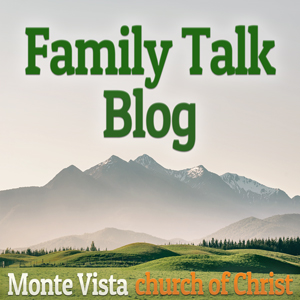Many begin the description of the tabernacle with the main structure and the furniture of the tent. They end with the curtain that forms the courtyard, which encloses the tent, laver, and bronze altar of burnt sacrifices. That follows the basic pattern established in Eden, where a territory known as Eden existed within the newly created world. Within Edan was a garden, and within the garden, God placed Man and Woman to serve Him. Everything they needed was there. Looking at the construction of the Tabernacle, the Temple, and much later, the church, we see the structure on earth, separated from the world by some means and supplying the necessary items to worship and serve God as He desires. In the blogs to follow this, we will look at the components of the Tabernacle, the placement of each, then look at the antitypes each piece represents. A list is in the next paragraph.
The initial instructions to Moses to build the Tabernacle are found in Exodus chapters 25 through 30. The Ark of the Covenant (Exodus 25:10-22). The Table for Bread (Exodus 25:23-30). The Golden Lampstand (Exodus 25:31-39). The Tabernacle (Exodus 26). The Bronze Altar (Exodus 27:1-8). The Court of the Tabernacle (Exodus 27:9-19). Oil for the Lamp (Exodus 27:20-21). The Priests, Their Garments and Consecration (Exodus 28 and 29). The Altar of Incense (Exodus 30:1-10). The Census Tax (Exodus 30:11-16). The Laver of Bronze (Exodus 30:17-21). The Anointing Oil and Incense (Exodus 30:22-38).
These instructions begin with the most significant artifact of Israel’s worship of God. The item represented God’s throne of mercy, where He would accept their offering of atonement for their sins. Its placement and isolation from the people are addressed in the New Testament as “a symbol for the present time” (Hebrews 9:9). The significance of the physical sprinkling of animal blood in and on the Ark and the Mercy Seat placed on its top, shadowed the blood of Christ shed for our sins and our redemption from wages sin. However, the blood of bulls and goats only delayed the penalty for sins “But in those sacrifices there is a reminder of sins year by year. For it is impossible for the blood of bulls and goats to take away sins” (Hebrews 10:3-4). The blood of Christ, the antitype of all sacrificial blood spilled, removed the guilt of sin and declared the faithful to be justified (Hebrews 9:11-14; Romans 5:9).
There may also be a type in the craftsmanship of the Tabernacle. God wanted perfection in constructing the place and items Israel would have and use as they worshiped Him. So He filled man with the Spirit to meet His exact specifications. “Now the LORD spoke to Moses, saying, “See, I have called by name Bezalel, the son of Uri, the son of Hur, of the tribe of Judah. “I have filled him with the Spirit of God in wisdom, in understanding, in knowledge, and in all kinds of craftsmanship, to make artistic designs for work in gold, in silver, and in bronze, and in the cutting of stones for settings, and in the carving of wood, that he may work in all kinds of craftsmanship. “And behold, I Myself have appointed with him Oholiab, the son of Ahisamach, of the tribe of Dan; and in the hearts of all who are skillful I have put skill, that they may make all that I have commanded you” (Exodus 31:1-6).
As Jesus built His church, He gave similar aid to those apostles chosen to spread the gospel. “But I tell you the truth, it is to your advantage that I go away; for if I do not go away, the Helper will not come to you; but if I go, I will send Him to you. “And He, when He comes, will convict the world concerning sin and righteousness and judgment; concerning sin, because they do not believe in Me; and concerning righteousness, because I go to the Father and you no longer see Me; and concerning judgment, because the ruler of this world has been judged. “I have many more things to say to you, but you cannot bear them now. “But when He, the Spirit of truth, comes, He will guide you into all the truth; for He will not speak on His own initiative, but whatever He hears, He will speak; and He will disclose to you what is to come. “He will glorify Me, for He will take of Mine and will disclose it to you” (John 16:7-14).
The building of the Tabernacle and the church were too important to leave to the fallible mind and talents of men. Therefore, God ensured the perfection of the building by taking direct action in the construction. The first was a physical set of architecture and furnishings, and the second was a spiritual body. Both provided all the necessities of acceptable worship for the time—Israel under the Law of Moses and Christians under the Gospel of Christ. We can read and learn from the first in the Old Testament. We can read, study, and live by the Law of Christ in the New Testament. The shadow has been replaced by the fullness of God’s redemption and fellowship.
